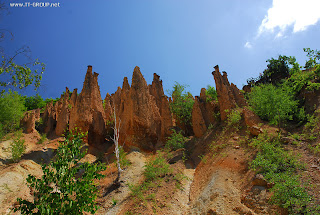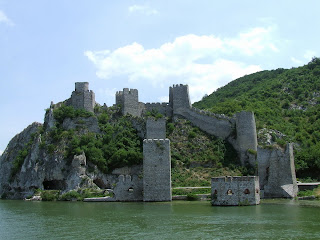Por-Bazhyn is Russia’s most mysterious archaeological site located in the center of a remote lake (Tere-Khol) of Southern Siberia. The Por-Bazhyn rectangular area of 162 meters and outer walls are 40 feet high enclosing an area of seven acres criss-crossed with the labyrinthine remains of over 30 buildings. It is thought, that Por-Bazhyn built by the Uighurs, a Turkic who once ruled an empire that spanned from Mongolia till Southern Siberia. Uighurs might have been built the building for defense purpose. Archaeologists are in trying to find the purpose of building a complex and why it was abandoned? However, few evidence of great fire at Por-Bazhyn or may be other reason the Uighurs eventually left. The Po-Bazhyn is first explored in 1891 by a Russian archeologist who has noticed similarity of layout to Karac Balgasum, (the former capital of Uighur Empire). Therefore, dendrochronology and radiocarbon dating point to that the “fortress” was built between AD 770 and 790.
Por-Bazhyn location is eight kilometer west of the village of Kungurtuk in the southwest of the Republic of Tuva close to the Russian border with Mongolia. The unique layout of Por-Bazhyn is more intricate as compared to other Uighur fortresses of that period. Vladimir Putin, president of the Russian Federation, even impressed him greatly with both the scale of the excavations and the site itself and these ruins suggest it would have been nearly impregnable. Moreover during excavation, some wood samples extracted supporting the compacted clay fabrics of the wall, an old Chinese building technique. This shows, Chinese architects and builders were directly involved in the construction of this fortress. Moreover, in 2007 a large-scale fieldwork was taken by the Russian Academy of Sciences, the State Oriental Museum, and Moscow State University. And they found clay tablets of human feet, faded colored drawings on the plaster of the walls, giant gates and fragments of burnt wood, but nothing substantial that could be responsible for a conclusive answer as to why the structure was built.
The future of Por-Bazhyn’s is doubtful, as structure sits on a bed of permafrost slowly melting and warmer temperature causing the water level is rising. The above reason may cause to collapse the structure into the lake, possibly in next 70 years or so. Moreover, the structure has also been badly hurt due to major earthquake happened in past centuries. The first excavations of the site wasn’t carried out until almost 60 years later by another Russian archeologist who saw construction characteristics typical of Chinese architecture from the T’ang Dynasty. Based on anecdotal evidence, the so-called Selenginsk inscription, the lead archeologist of the excavation S.I. Vainshtein offered that Por-Bazhyn was a defense fortress built by the second Uighur ruler, Boyan-Chur in 750CE. Vainshtein's hypothesis soon became the most widely accepted and disseminated by other investigators, even though it was based solely on speculation.
In 2007, large-scale fieldwork was undertaken by the Russian Academy of Sciences, the State Oriental Museum, and Moscow State University. Archaeologists found clay tablets of human feet, faded coloured drawings on the plaster of the walls, giant gates and fragments of burnt wood, but nothing substantial that could provide a definitive answer as to why the structure was built.














































